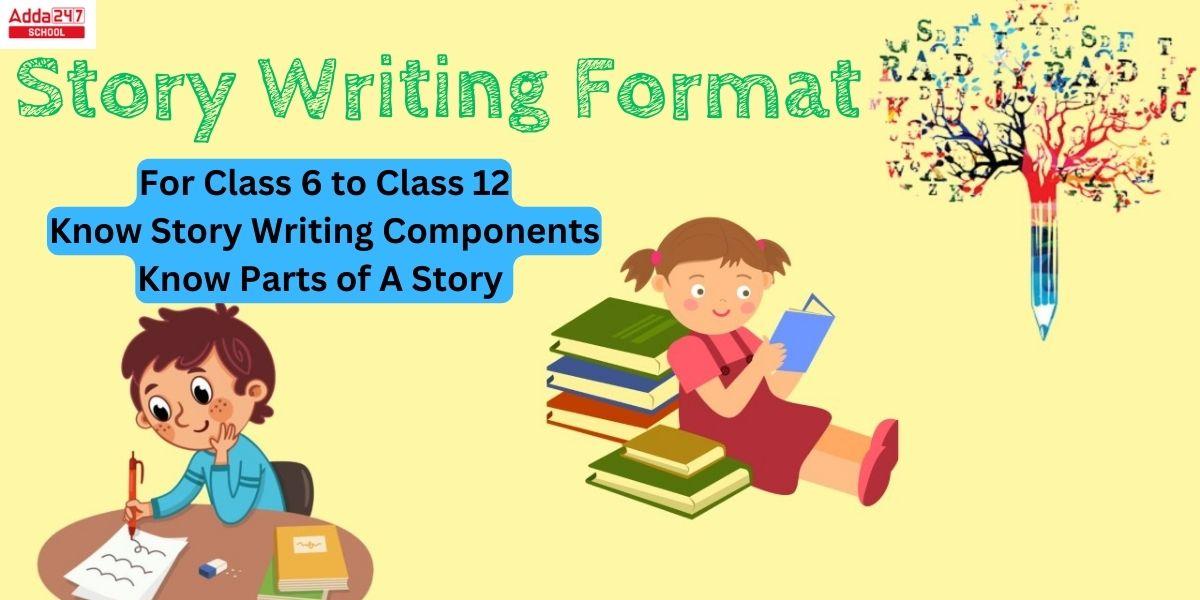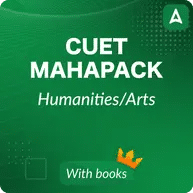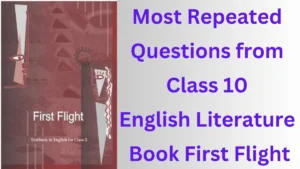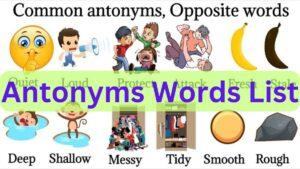Table of Contents
Story Writing Format: The key component for writing a good story is to have a solid grasp of the story writing format. You must have heard some of the famous stories that you would read or listened to somewhere. Have you ever thought of what makes these famous stories so captivating and interesting than the ordinary ones? All the magic of a good story lies in the story writing format. To equip students with the skills of good story writing, they are taught and encouraged to write stories on different topics.
Story Writing Format
A good story writing format is essential to write an interesting story that catches the eye of the readers. The story writing format includes different components which can be seemed as ingredients to prepare the perfect dish of a compelling tory. For generations, audiences have been attracted by the art form of story writing. Whether found in modern scripts, classic novels, or ancient epics, a well-structured story-writing framework forms the core of any compelling story.
For learners hoping to produce stories that readers will find captivating and memorable, it is essential to understand and adhere to a good story writing format. Students are also taught the essence of story writing from early class in their school. Students from Class 6 to Class 12 are asked to write different types of stories too. We will examine the fundamental components of the story writing format in this article to assist aspiring writers in creating narratives that connect with readers.
What is Story Writing?
Story writing is a type of writing where the author tells the story of a sequence of events that led to a situation, how that problem developed, and how the outcome brought the characters to where they are now. A story might feature fictional or real-life characters and an occurrence that happened or is fictional.
A story is just a narrative that consists of actual or imaginary individuals placed in specific situations or events. Writing stories is a required component of the English language curriculum in schools. This is done to help the children become more proficient language learners as well as more creative thinkers. Once you feel the joy of creating a story, writing stories can become a fascinating pastime. Knowing the many parts of a story and how to structure it might help you learn how to produce a well-knit narrative.
What is Story Writing Format in English?
The format that story writers typically use for their work aids in organizing it is known as the story writing format. These formats are recognizable in many stories once you are familiar with them. The story writing format in the English Language consists of five major components. The five major components must be followed in sequence for writing a good story. Students from class 6 to class 12 are taught this format with different complexities to master the art of story writing.
Components of A Story
Every compelling story has a well-designed framework made up of multiple components that come together to form a whole. From pleasant fireside tales to grand space operas, all compelling stories are built around a few fundamental components. When these components are skillfully combined, they create a vivid environment that captivates readers and leaves them in awe. There are 5 components of a story in the English language. These are:
- Character
- Setting
- Plot
- Theme
- Conflict
Apart from this, a story also has a style of writing and a point of view from which it is told or portrayed. Now let’s explore these components in detail.
Character
A story cannot progress without its characters; their reactions to the plot’s developments are what keeps it moving. But characters don’t have to be living things or even humans. It is possible to give items personalities by anthropomorphization (giving human characteristics or behavior to living or non-living things), and they can make for equally compelling characters as people.
Getting to know your characters well is essential for character development, though. It is insufficient to simply know your characters in passing; instead, you should develop a genuine friendship with them. It will be simpler to predict their reactions to the events of your story and what they would say after you get to know them as though they were real.
If your character is timid and sensitive, they might not express their dialogue aloud until they are extremely pressed. What then would they say if they were forced? When does someone cross the line and start shouting? What about a grumpy and furious character? What might possibly soften and make them kind? These are the things one should keep in mind while exploring characters for his/her story.
Setting
One of the most crucial aspects of the tale writing style is setting, which has the power to alter everything that the other elements can affect. A graveyard serves as a common backdrop for horror stories; while it may create a compelling narrative, it may also become formulaic. A horror story set in a gym or shopping center will defy the reader’s expectations. From that point on, the characters must behave differently as they learn how to respond to situations that don’t make sense in this particular scenario.
The actual circumstances in which the story is set are referred to as the “setting.” The story’s setting may also be influenced by the characters’ locations. A narrative can take place in a variety of places, including a train, a small island, outer space, a house, the street, a forest, or even someone’s head. It is the author’s responsibility to provide every element they believe will add vibrancy to the narrative.
If you want to really throw an unexpected twist in the story, think about setting it somewhere the events would never occur.
Plot
Plot is also famously known as the narrative. The story’s events are referred to as the plot. The plot is what keeps your characters moving through the story; it’s where a writer adds conflicts, alters the course of events, and provides room for character growth.
All the other elements of a story’s writing structure exist within the plot, which is like a room. Within the storyline, which is what contains them all, they all engage with one another. There are moments when the plot develops slowly as the tension increases, and other times when it moves quickly and the events unfold one after the other. It is the responsibility of the writer to know where to put the plot.
The plot is further divided into five different elements, that are given below.
Exposition: The opening of the story, or the moment at which the characters and location are introduced.
Rising action: It refers to the part of the story where the protagonist encounters a situation or a series of circumstances that cause obstacles or conflicts in their formerly tranquil, unhindered lives and those around them.
Climax: The most exciting element of a story which also becomes the turning point of the plot.
Falling action: This refers to the events or activities that bring the story to a close. This point reflects the positive or negative turn of events that has taken place as a result of the protagonist’s decision in the climax. At this stage, you can also see how the different characters resolve the issue or dispute by working alone or in concert.
Conclusion: This is where the story comes to a conclusion. This is where you learn how everything has leveled out. The descending action culminates in the conclusion, which may or may not be happy.
Theme
A story’s theme is the concept or subject that runs across the whole story. The entire plot is centered around this idea. Family relationships, music, romance and love, war, rebellion, and so on are a few examples of themes. These are not to be confused with genre; genre is a particular storytelling style with distinctive elements and stylistic turning points, whereas themes are the central ideas of individual stories.
This spans the whole story that you write. A theme is the message you wish to convey via your story; for example, the topic of equality might be present in a novel where a certain group of people is threatened. The theme of ecology could appear in a fiction where something terrible happens to the world.
Conflict
The problem in the story is referred to as the “conflict.” Even when everything is going smoothly, there is one scene in the novel where the main protagonists encounter a barrier that prevents them from reaching a predetermined objective. The protagonist is propelled by conflict to confront the antagonist, step outside of their comfort zone, take courageous action to address the problem, and devise plans of action to achieve their objective.
Conflict is one of the more difficult aspects of the story writing format for a writer. To create conflict in a story, you must first introduce a problem or dilemma. The characters must figure out how to fix this issue and bring the plot back into balance. These conflicts can range in size from minor disagreements like arguments to major ones like saving the world.
The goal of conflict in your story should be to upend the accepted norms in the universe you’ve created. The concepts of two characters, or groups of characters, should collide and push them to acknowledge this difference. This is where character development becomes important; if you don’t know your characters well enough, you won’t be able to predict how they will handle conflict.
Story Writing Format For Class 6 to Class 9
A story is just a narrative that consists of actual or imaginary individuals placed in specific situations or events. A key component of the English curriculum for Classes 6 and 12 is story writing, which teaches students the fundamental structure and framework of a story. In schools, students are taught to develop the early story writing techniques that include the following components.
Order: The story should be told in the following chronological order: the characters should be introduced at the beginning, significant events should occur during the story, and the ending should be revealed at the end.
Theme: Students should refrain from introducing or creating additional story topics and instead adhere to the theme given in the opening words of the story writing prompt.
Conciseness: Write the story within the allotted word count while maintaining an engaging narrative.
Important Details: Every story should include an introduction, a pivotal moment, and an ending.
Story Writing Format – Class 10 to Class 12
In both the Class 10 and Class 12 of CBSE and other boards, the story writing component requires students to construct a story on a variety of themes. After evaluating coherence, accurate word choice, proper spelling, and punctuation, the story expression receives five marks and the story content help students get 4 marks, while the title and moral receive the weightage one mark. For students going to take the board exam must follow the structure given below to write their story.
- Heading
- Writer’s Name and Class
- Body (include incident/experience information, reaction, factual information and more)
Story Format For Class 6 to Class 12
Every story must follow a format that makes it more sensible and attractive. Basically, there should be a beginning, middle, and end to every story. Without any of these, a story would seem and sound lacking. The format of a story is discussed below.
Beginning
Like any other work of literature, the beginning of the story will decide whether or not the reader wants to read the rest of it. Thus, getting off to a really captivating start is essential. It is imperative to maintain the readers’ interest from the beginning. Sayings like “A long time ago” or “Once upon a time” are the tried-and-true methods of beginning a story. It must have appeared frequently in children’s literature. That need not always be the case, though. The story can begin with the introduction of a character, the description of the scene, or even an action.
Middle
The story will not benefit in the slightest from starting off on a fantastic note and letting it drag later. The story must carry forward its beginning. Use literary methods, intelligent word choice, and, if you believe it will advance the plot, even the smallest detail. Further assistance can be provided by using descriptive language, which will help your readers visualize everything that is happening in the story.
End
A skilled storyteller understands when to reveal things to their audience. In a similar vein, knowing when to end a story is essential to writing a good one. You’ve probably read a lot of works with open endings; that’s another option. Keep in mind that you don’t always have to give your audience what they might expect or a really happy finish. You can choose how you want to conclude the story. All you have to do is make sure the story has the happy ending it deserves.









 Most Repeated Questions from Class 10 En...
Most Repeated Questions from Class 10 En...
 Republic Day Speech In English 2025, 26 ...
Republic Day Speech In English 2025, 26 ...
 500+ Antonyms Words List for Kids, Downl...
500+ Antonyms Words List for Kids, Downl...










